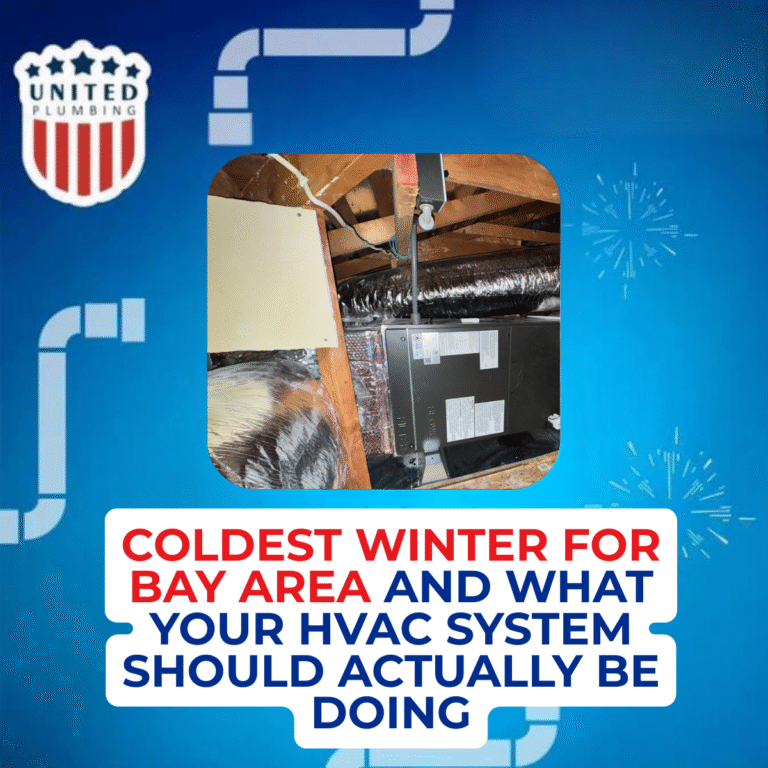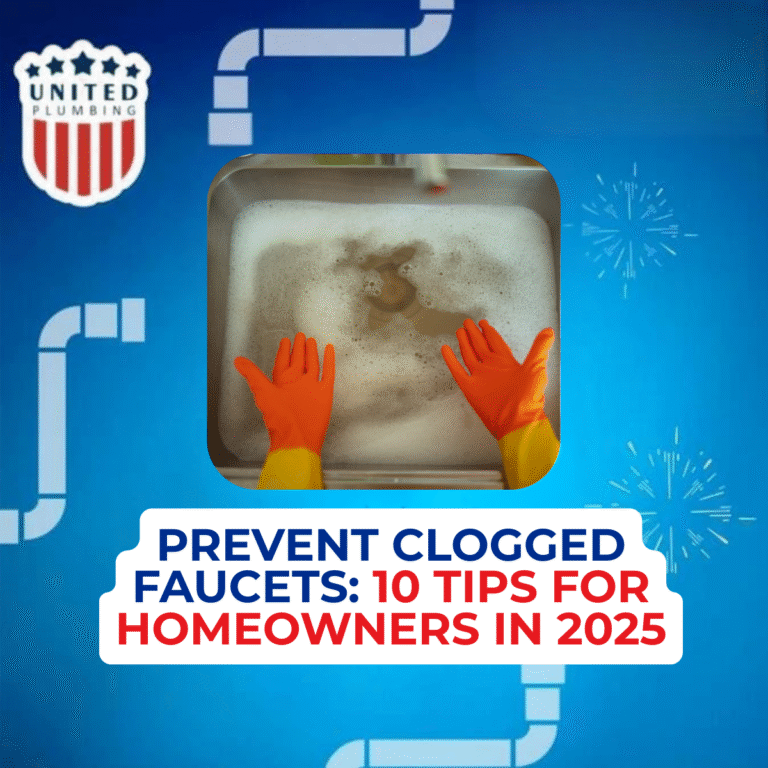FIVE-STAR TEAM WARRANTY &
SAME-DAY SERVICE
How to Find Your Sewer Line Cleanout

If your sinks are draining too slowly, your toilets are gurgling, or you are noticing foul odors coming from your pipes, there is a high chance your main sewer line might be partially blocked. In that case, gaining direct access through your sewer line cleanout is the best way to diagnose and solve the problem—either with your own hands or with assistance from a professional plumber. But what if you don’t even know where to look? In this guide, we’ll help you understand what a cleanout is, how to find it, and when to call in a professional plumber.
What Is a Sewer Line Cleanout?
A sewer cleanout is a capped pipe that connects directly to your main drain line. It provides an important entry point for plumbers or homeowners to remove any blockages from the main sewage line using plumbing tools like a drain snake. These cleanouts are extremely useful for clearing out tree roots, grease buildup, or other debris that can accumulate in your home’s plumbing system causing nuisance.
You might usually find the cleanout near your home’s foundation, often very close to where your main line exits the house and connects to the municipal sewer system.
Where to Look: Prime Cleanout Access Points
1. Outside the House
In warmer climates, you are more likely to find the cleanout outside the house, either in the front yard, side yard, or along an exterior wall. It might be hidden somewhere under a metal cover or camouflaged by landscaping. If you see a threaded plug or capped pipe, it is very likely it. Some cleanouts are marked with a square or round access cap labeled as “cleanout” or “SCO.”
2. Indoors
Homes in colder climates, or older homes, might have cleanouts located inside the house. Please check:
- The basement floor
- Utility areas
- Behind a panel in the utility room
- Near the water heater or washing machine
- Inside a crawl space
The pipe may be typical cast iron pipe or plastic (like ABS or PVC), and it usually has a square nut or screw cap on top of it.

Still Can’t Find It?
If you’ve checked the usual spots and still can’t find it, try this approach:
Visualize the Drain Layout:
Try thinking about where all your drains—kitchen sink, toilets, showers—converge. They all should connect to the main sewer pipe, which runs in a straight line toward your property line and into the city’s sewer line.
Use a Metal Detector:
If your cleanout is buried near your home (not uncommon), a metal detector can help pinpoint it—especially if it has a cast iron or metal cap on it.
Check Property Records:
It is recommended to contact your county assessor department or look at your real estate documents. Sometimes a diagram or home inspection report can show the exact location of cleanout access.
Call a Licensed Plumber:
In some rare cases, homes were built without a cleanout or had one removed during previous renovations. A licensed plumber can inspect and identify your access port and even install a new one if it is needed.
Why It Matters
Having a cleanout makes it much easier and cheaper to fix clogged drains and inspect for deeper plumbing issues. If your home doesn’t have a functional cleanout, any major blockage might require breaking concrete or removing landscaping, which will significantly raise costs. Moreover, regular maintenance through the cleanout improves water quality, prevents raw sewage from backing up into your home, and helps to prevent plumbing emergencies.
When to Search For A Plumber Near Me?
Even if you find the cleanout, it doesn’t mean you have to fix the problem yourself. If you are not confident about your home improvement capabilities, or if you are seeing signs of a bigger issue—like recurring clogs, foul odors, or sewage backups—it’s the perfect time to bring in a professional. A plumbing company that performs both residential and commercial plumbing jobs can try high-pressure drain cleaning, inspect your main house trap, and even perform full sewer line repair if needed.
Final Maintenance Tips for Homeowners
- Don’t block access to the cleanout
- Keep a record of where your plumbing cleanout is, especially if you plan to sell your property later.
- We recommend to include cleanout checks in your routine maintenance schedule—just like you would for your water line or Air Conditioning unit.
Need Assistance Finding Yours?
If you’re in California and can’t find your home’s sewer cleanout, please give United HVAC, Plumbing & Electrical a call. We’ve helped thousands of property owners—from those with cast iron drains to homes with ABS pipes sewer issues and everything in between.
Our licensed plumbers are ready to serve your plumbing needs.
Email Address: [email protected]
Phone Number: (408) 539-6936
Post views: 649
Frequently Asked Questions
What does a sewer line cleanout look like?
A sewer cleanout usually looks like a capped pipe, usually made of ABS or cast iron, that sticks out a little bit from the ground or is located inside the home. This sewer cleanout pipe often has a round or square cap labeled “cleanout” and may be found near your home’s foundation. It provides very important access for managing your plumbing needs and addressing any blockages in the main sewer line.
Can I locate my sewer cleanout on my own?
Yes, many homeowners can find it by checking common areas such as the front yard, utility room, or crawl space. The cleanout is often located in line with where the home’s main plumbing system connects to the municipal sewer line. If the pipe is buried or hidden (not uncommon), reviewing property records of your house or using a metal detector can help. If you still can’t locate it, contacting a provider of professional plumbing services is a good idea.
What should I do if I can't find a sewer cleanout on my property?
Some older homes may not have a cleanout, or it might be concealed or removed. In that case, a licensed plumber can inspect your home and locate the best point to install a new sewer cleanout pipe. Adding one makes it much easier and much more cost-effective to serve future plumbing needs like routine cleaning or sewer line repair.
How often should I check or maintain the sewer cleanout?
As an important part of your routine plumbing services, it’s a good idea to inspect the cleanout once a year. Regular maintenance prevents serious plumbing issues such as clogged drains, backups, or damage to your main drain line. If you’re mentioning signs of a problem, like gurgling sounds or foul odors, it’s a perfect time to have the line inspected.
Is it safe to open the cleanout myself?
Opening a sewer cleanout pipe could be safe if done carefully, but it may release pressure or raw sewage if there’s a blockage. Only open it if you are confident in your abilities and have the right tools (like a pipe wrench). If you are a little unsure or suspect a major issue with the municipal sewer line, calling a plumbing company for professional help is the safest route.
Latest posts

Coldest winter for Bay Area in 2025 And What Your HVAC System Should Actually Be Doing
If your home feels colder than usual this winter, you’re not imagining it. Bay Area home heating systems are being...

Prevent Clogged Faucets: 10 Tips for Homeowners in 2025
Clogged faucets are one of the most common service calls we handle in California homes, and the good news is that...


If you still have questions or need advice, please leave a request and we will contact you as soon as possible
Need a plumber and got no clue where to start?
(408) 539-6936Facing a plumbing issue? Get a FREE in-person estimate and quick solutions from our skilled technicians, ensuring your home runs smoothly again!
